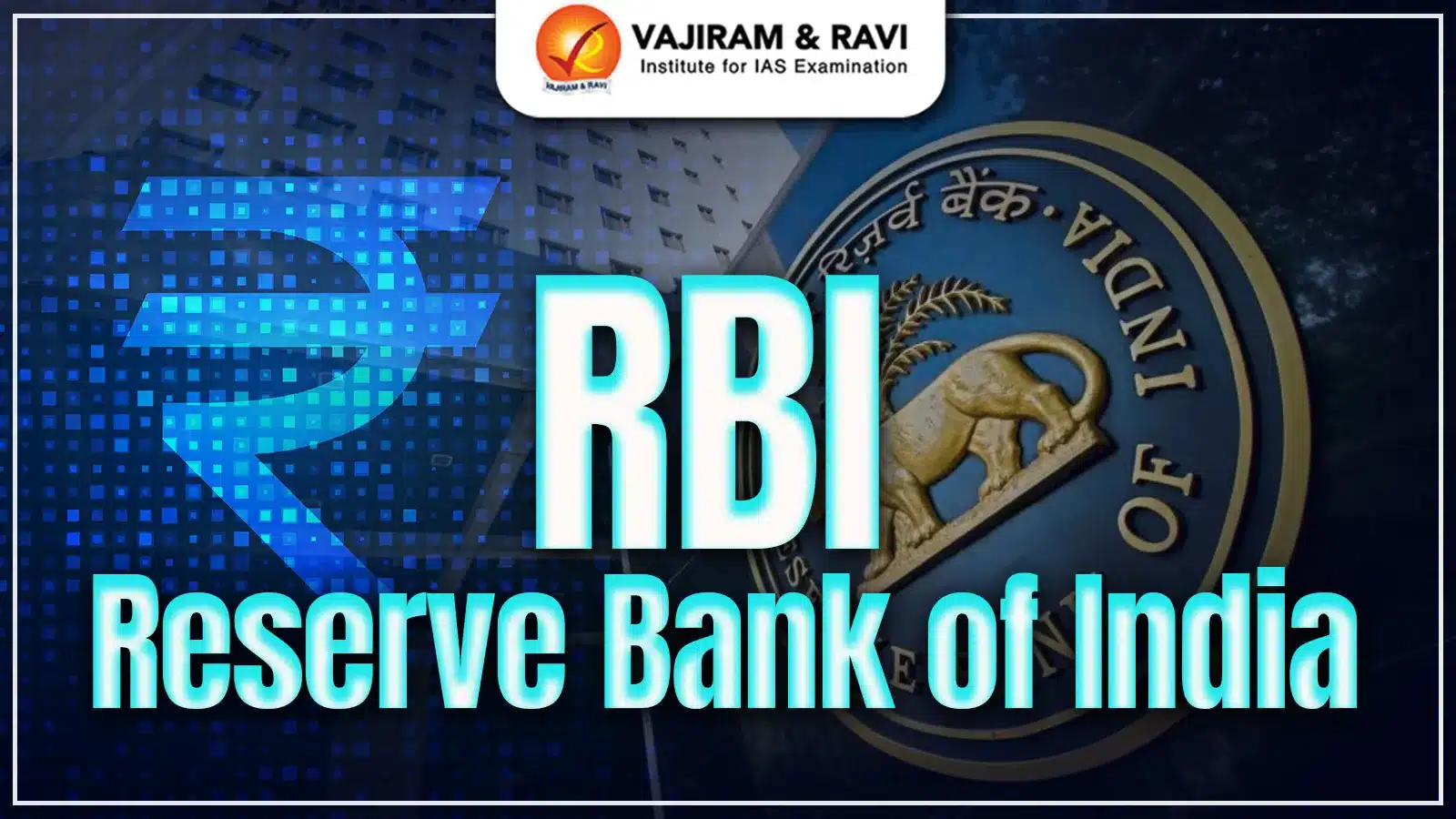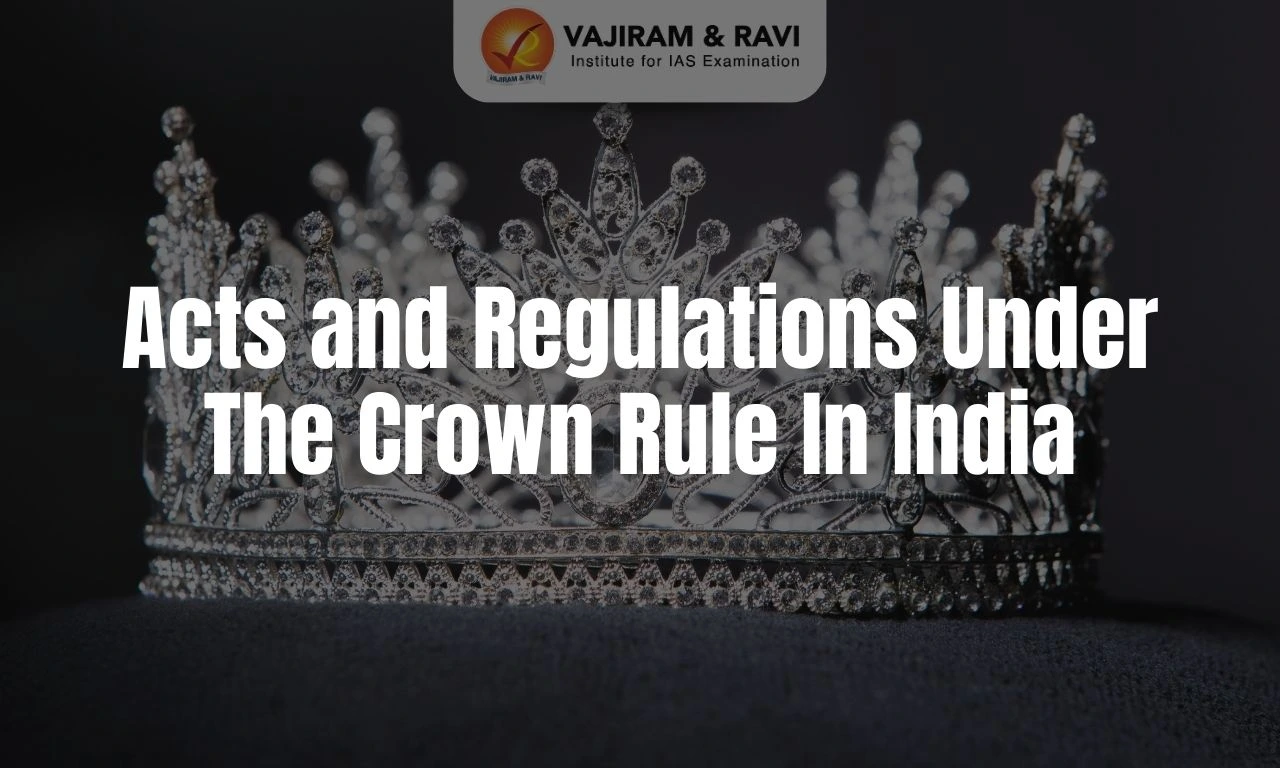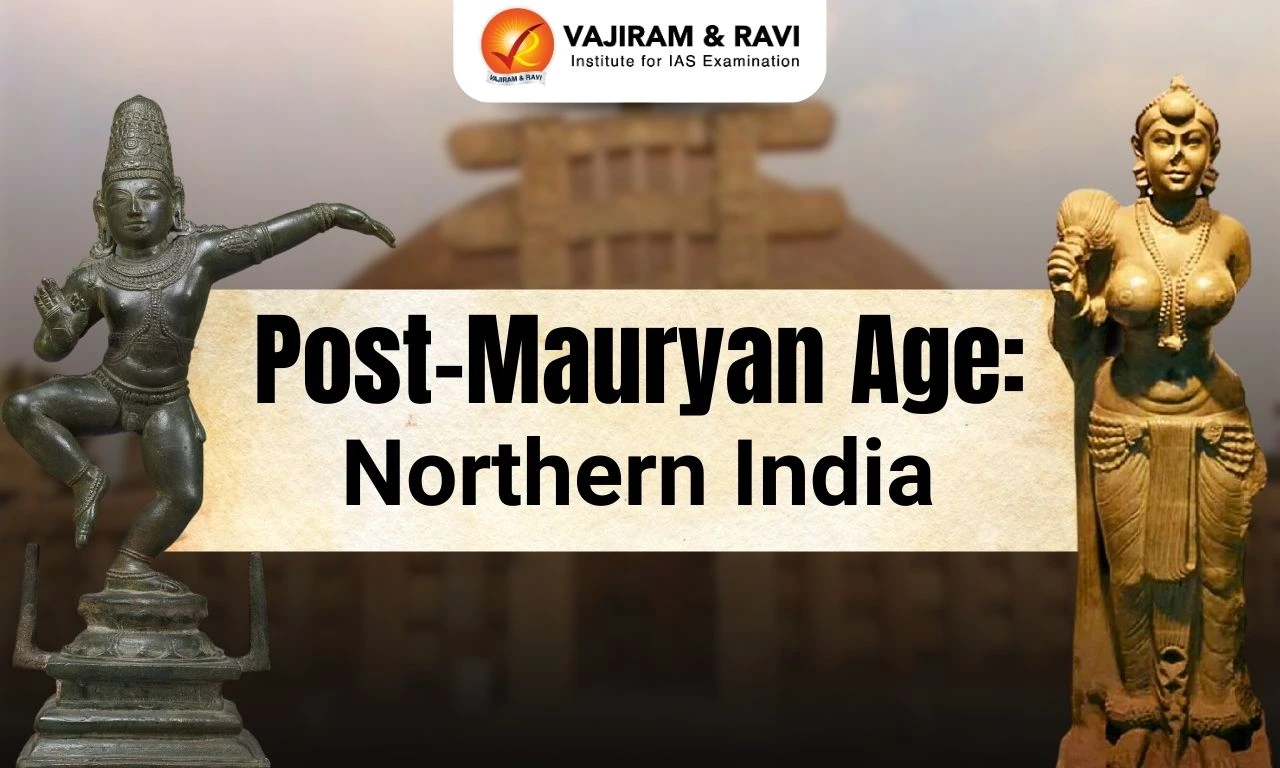Reserve Bank of India (RBI) is the nation's central bank, tasked with overseeing and regulating the monetary and financial framework of India. Established on April 1, 1935, based on the recommendations of the Hilton Young Commission, under the Reserve Bank of India Act of 1934, the RBI plays a crucial role in India's economic development by managing the country's currency, credit, and financial stability.
Reserve Bank of India (RBI) regulates the issue and supply of the Indian currency and manages the country’s monetary policy to ensure financial stability and economic growth. It plays a key role in controlling inflation, ensuring the smooth functioning of the financial system, and promoting digital payments and financial inclusion across the country.
Reserve Bank of India RBI About
Reserve Bank of India (RBI), India's central bank, was founded on April 1, 1935. It is responsible for regulating the country’s monetary policy, issuing currency, managing foreign exchange, and ensuring financial stability. RBI also supervises and regulates banks and financial institutions to maintain a secure and efficient banking system.
Reserve Bank of India History
Reserve Bank of India History dates back to British rule when it was established on April 1, 1935, under the Reserve Bank of India Act, 1934. Originally a privately owned bank, it was nationalised in 1949 after India gained independence.
- Pre-independence: In 1926, the Royal Commission on Indian Currency and Finance, also known as the Hilton Young Commission, proposed the concept of an Indian central bank.
- The Reserve Bank of India Act was passed in 1934, and the RBI's operations began on April 1, 1935. Initially, the RBI's headquarters were in Calcutta (now Kolkata) before moving to Mumbai in 1937.
- India was the first British colony to establish its own central bank. The RBI also served as the central bank of Burma (Myanmar) until April 1947 and Pakistan's central bank until June 1948.
- Post-independence: Originally, the RBI was a privately owned institution. However, on January 1, 1949, under the Reserve Bank (Transfer to Public Ownership) Act of 1948, it was nationalised to align with the country's socioeconomic goals and increase governmental control over the banking sector.
- This represented a significant shift in the central banking paradigm as the RBI became entirely government-owned.
- The RBI's first Governor was Australian Sir Osborne Arkell Smith. Sir C.D. Deshmukh was the first Indian Governor.
- Later Developments: Post-independence, the RBI was instrumental in developing India's financial structure and guiding the newly formed nation's economic policies. With the advent of globalisation and financial sector reforms in the 1990s, the RBI underwent significant changes to meet the needs of a liberalised Indian economy.
Reserve Bank of India Nationalization
Reserve Bank of India nationalization refers to the transfer of the RBI’s ownership from private shareholders to the Government of India. Initially established in 1935 as a privately owned institution, the RBI’s shares were held by individuals and private institutions.
- However, with the enactment of the Reserve Bank of India (Transfer to Public Ownership) Act, 1948, the government acquired full ownership.
- The nationalization came into effect on January 1, 1949, making the RBI a completely state-owned entity.
- Post-nationalization, it officially became the central bank of India, responsible for regulating the country’s monetary and banking systems.
Reserve Bank of India Objectives
Reserve Bank of India (RBI) aims to maintain monetary and financial stability, manage currency, and foster economic growth (GDP) while regulating financial institutions and promoting financial inclusion across the country.
- Monetary Stability: To maintain price stability and ensure adequate flow of credit to productive sectors through various reserve measures.
- Financial Stability: To regulate and supervise the financial system to enhance stability and protect the interests of depositors.
- Currency Management: To manage the currency and ensure its smooth distribution across the country.
- Economic Growth: To support the economic policies of the government aimed at fostering economic growth and development.
- Regulation of Financial Institutions: To regulate and supervise the financial system to ensure its stability and soundness.
- Developmental Role: To support national objectives by promoting financial inclusion and extending banking services to rural and semi-urban areas.
Acts administered by the Reserve Bank of India
Acts administered by the Reserve Bank of India include:
- Reserve Bank of India Act, 1934
- Public Debt Act, 1944/Government Securities Act, 2006
- Government Securities Regulations, 2007
- Banking Regulation Act, 1949
- Foreign Exchange Management Act, 1999
- Securitisation and Reconstruction of Financial Assets and Enforcement of Security Interest Act, 2002 (Chapter II)
- Credit Information Companies (Regulation) Act, 2005
- Payment and Settlement Systems Act, 2007
- Factoring Regulation Act, 2011
RBI Branches and Offices
Reserve Bank of India (RBI) operates through a well-structured network of branches and offices across the country. At the top is the Central Office, located in Mumbai, which serves as the headquarters and houses the RBI Governor. From here, the entire organisation is managed and major decisions are made.
RBI Zonal Offices
To oversee operations across various regions, the RBI has four Zonal Offices in Mumbai (West), Delhi (North), Chennai (South), and Kolkata (East).
RBI Regional Offices
RBI Zonal Offices are supported by around 22 Regional Offices, mainly located in various states' capital cities. These regional offices help implement RBI’s policies at the local level and coordinate with banks and financial institutions in their respective regions.
RBI Other Offices
Additionally, the RBI has several other offices and centres in important cities. These include specialised departments for rural credit or planning, training centres for bank officials, and facilities to monitor specific financial sectors.
Reserve Bank of India Structure
Reserve Bank of India (RBI) operates under the guidance of a 21-member Central Board of Directors appointed by the Government of India for a four-year term, as per the RBI Act. This board includes both official and non-official members, ensuring diverse expertise and representation from various sectors and regions across the country.
Central Board of Directors of RBI
The Reserve Bank of India's (RBI) affairs are overseen by a 21-member Central Board of Directors appointed by the Government of India as per the RBI Act for a four-year term. The board consists of official directors, including the RBI Governor and up to four Deputy Governors, and non-official directors, such as ten nominees from various fields, four representatives from local boards, and two government officials.
Local Board of RBI
Local Boards of the Reserve Bank of India (RBI) are regional bodies established to represent different geographical areas of the country—Western, Eastern, Northern, and Southern areas.
- Constitution: The Local Boards comprise four distinct regions: the Western Area, the Eastern Area, the Northern Area, and the Southern Area.
- Membership: Each Local Board consists of five members.
- Appointment: The members of the Local Boards are appointed by the Central Government.
- Term: Each member of a Local Board holds office for a term of four years.
Governor of RBI
Governor of RBI is the chief executive of the Reserve Bank of India, responsible for overseeing its operations and implementing monetary policies. The RBI Governor is appointed by the Government of India for a specified term. Their authority is derived from the Reserve Bank of India Act. The Governor also represents the RBI at national and international forums and is responsible for ensuring the financial system's integrity.
Current RBI Governor
The current RBI Governor is Sanjay Malhotra, who assumed office on December 11, 2024, as the 26th Governor of the Reserve Bank of India. A 1990-batch IAS officer from the Rajasthan cadre, Malhotra, previously served as Revenue Secretary in the Ministry of Finance.
Reserve Bank of India Functions
The Reserve Bank of India (RBI) serves as India’s central bank and plays a pivotal role in maintaining financial stability, guiding monetary policy, and supporting national development. Its core functions include:
- Monetary Authority: The RBI formulates, implements, and monitors India's monetary policy. The primary goal is to maintain price stability while also considering the objective of fostering economic growth.
- The RBI uses various tools, such as repo rate adjustments and open market operations, to influence money supply and inflation.
- Regulator and Supervisor of the Financial System: The RBI sets broad parameters for banks and financial institutions, ensuring public confidence, protecting depositors, and promoting cost-effective banking services.
- The introduction of the core banking solution (CBS), such as RBI’s e-Kuber platform, has revolutionised banking by enabling real-time, centralised operations, seamless fund transfers, and improved risk management across all branches.
- Manager of Foreign Exchange: The RBI manages the Foreign Exchange Management Act (FEMA), 1999. The RBI's role is to facilitate external trade and payments while also promoting the orderly development and maintenance of the foreign exchange market in India.
- Issuer of Currency: RBI issues, exchanges, and destroys currency notes, ensuring an adequate supply and quality. Additionally, RBI has launched pilots for Central Bank Digital Currency (CBDC), known as the Digital Rupee (e₹), in both wholesale and retail segments.
- Developmental Role: The RBI undertakes various promotional functions to support national economic objectives. This includes initiatives for financial inclusion, poverty alleviation, rural credit, and infrastructure development.
- Regulator and Supervisor of Payment and Settlement Systems: The RBI introduces and upgrades safe and efficient modes of payment systems to meet the evolving needs of the public. The goal is to maintain public confidence in the payment and settlement system by ensuring its safety, efficiency, and reliability.
- Related Functions:
- Banker to the Government: The RBI performs merchant banking functions for the central and state governments. It manages the government’s banking transactions, such as public debt management and issuance of government securities.
- Banker to Banks: The RBI maintains the banking accounts of all scheduled banks. It also acts as a lender of last resort, providing liquidity support to banks when needed.
RBI Publications
RBI Publications provide valuable insights into the country’s economic trends, financial stability, and monetary policy, helping researchers, policymakers, and the public understand the Reserve Bank’s role and economic outlook.
- Annual Report: It provides a detailed summary of the Reserve Bank’s functions, key operations, and an overview of the economy for the financial year.
- Financial Stability Report (FSR): This report reviews potential threats to the financial system and assesses how strong and stable the system remains under stress.
- Monetary Policy Report (MPR): It outlines the RBI’s monetary policy decisions, explains the current economic scenario, and gives future inflation expectations.
- Handbook of Statistics on the Indian Economy: This publication includes long-term data on various economic indicators, helping researchers and policymakers track changes over time.
RBI Surplus Transfer
RBI Surplus refers to the amount left after deducting the Reserve Bank of India’s total expenditure from its total income. Since the RBI’s expenses are significantly lower than its income (roughly one-seventh), the remaining amount is termed as the surplus. A portion of this surplus is retained by the RBI as equity capital to maintain its financial strength, and the rest is transferred to the central government.
- Government’s View: The government believes that the RBI should increase the dividend paid to it, arguing that the reserves maintained by the RBI—like the Contingency Fund—are much higher than required for its credit stability.
- RBI’s View: The RBI cautions that higher transfers could raise inflation by increasing the money supply. It also needs surplus funds to manage currency value fluctuations and unexpected financial situations.
RBI Surplus Transfer Advantages
RBI surplus transfer boosts government spending, which can help revive economic growth. It also reduces the government's borrowing needs, creating more space for private sector credit access. Additionally, it supports recapitalisation of public sector banks, strengthening the overall health of the banking system.
RBI Surplus Transfer Disadvantages
RBI surplus transfer may weaken the RBI’s financial buffer and independence, limiting its ability to manage financial crises. Additionally, improper utilisation of these funds could lead to inflation, further impacting economic stability and the central bank’s role in maintaining market confidence.
Reserve Bank of India Autonomy
Reserve Bank of India’s autonomy is critical to its effectiveness. While the Ministry of Finance oversees the RBI, it is expected to operate independently, particularly on monetary policy issues. This autonomy is required to make unbiased and effective decisions for the benefit of the economy.
- However, there have been debates and instances in which the RBI's autonomy has been questioned, particularly when its policies conflict with the government's fiscal policies.
- For example, Section 7(1) of the RBI Act 1934 empowers the Union government to give directions to the central bank after consultation with the RBI Governor in the public interest.
- Similarly, in the past, surplus transfers by the RBI have been the subject of debate on issues such as the RBI's adequate contingency fund and its autonomy and credibility.
Reserve Bank of India Significance
Reserve Bank of India (RBI) plays a crucial role in India's economic development by ensuring monetary stability, managing foreign exchange reserves, regulating currency issuance, and promoting financial inclusion across the country.
- Monetary Policy and Stability: The RBI formulates and implements monetary policy to keep prices stable and inflation under control, which is critical for economic growth.
- For example, the RBI's flexible inflation-targeting framework has helped to keep inflation within target ranges, contributing to economic stability.
- Foreign Exchange Management: The Reserve Bank of India (RBI) acts as the primary regulatory authority for monitoring and ensuring compliance with FDI regulations under the Foreign Exchange Management Act (FEMA), working in coordination with the Government of India
- As of May 2025, India's foreign exchange reserves were around $685 billion, providing a solid buffer against external shocks and import cover for about ten months.
- Currency Management: The RBI's role in currency issuance and management ensures that the general public has access to sufficient and high-quality currency, which is critical for maintaining trust in the monetary system.
- During the 2016 demonetisation process, the RBI managed the withdrawal of ₹500 and ₹1,000 notes, which accounted for 86% of the currency in circulation.
- Promoting Financial Inclusion: The RBI's initiatives, such as the Pradhan Mantri Jan Dhan Yojana (PMJDY), have had a significant impact on financial inclusion by bringing millions of unbanked people into the formal financial system.
- By March 2025, the PMJDY had opened over 55.02 crore bank accounts, highlighting the RBI's role in improving financial inclusion.
Reserve Bank of India Criticism
Reserve Bank of India (RBI) has been criticised for various reasons, including its regulatory effectiveness, government interference, and policy delays. Concerns have also been raised about its conservative monetary approach and the balance between controlling inflation and promoting economic growth.
- Government Interference: There have been concerns that government interference will undermine the RBI's autonomy. For example, in 2018, the resignation of former RBI Governor Urjit Patel was reportedly linked to disagreements with the government.
- Policy Delays and Effectiveness: The RBI's conservative approach may cause policy implementation delays. Furthermore, the efficacy of its policies is occasionally questioned, particularly in light of rapidly changing economic conditions and capital flows.
- Regulatory Issues: The RBI has faced challenges in effectively regulating non-banking financial companies (NBFCs) and dealing with banking frauds, raising concerns about its regulatory capacity.
- Economic Growth versus Inflation Targeting: The RBI's focus on inflation targeting has been viewed as detrimental to economic growth, particularly during periods of low inflation and slow economic activity.
- For example, from 2017 to 2019, while inflation remained within the target range, GDP growth slowed significantly, sparking debate over whether the RBI should prioritise growth more aggressively, especially now that inflation is under control.
Reserve Bank of India (RBI) UPSC PYQs
Question 1: Do you agree with the view that steady GDP growth and low inflation have left the Indian economy in good shape? Give reasons in support of your arguments. (UPSC Mains 2019)
Question 2: Which of the following are the sources of income for the Reserve Bank of India? (UPSC Prelims 2025)
- Buying and selling Government bonds
- Buying and selling foreign currency.
- Pension fund management
- Lending to private companies
- Printing and distributing currency notes
Select the correct answer using the code given below.
a) 1 and 2 only
b) 2, 3 and 4 only
c) 1, 3, 4 and 5 only
d) 1, 2, and 5 only
Question 3: Consider the following statements: (UPSC Prelims 2025)
- The Reserve Bank of India mandates all the listed companies in India to submit a Business Responsibility and Sustainability Report (BRSR).
- In India, a company submitting a BRSR makes disclosures in the report that are largely non-financial in nature.
Which of the statements given above is/are correct?
a) 1 only
b) 2 only
c) Both 1 and 2
d) Neither 1 nor 2
Ans: (b)
Question 4: Consider the following statements: (UPSC Prelims 2021)
- The Governor of the Reserve Bank of India (RBI) is appointed by the Central Government.
- Certain provisions in the Constitution of India give the Central Government the right to issue directions to the RBI in public interest.
- The Governor of the RBI draws his power from the RBI Act.
Which of the above statements are correct?
(a) 1 and 2 only
(b) 2 and 3 only
(c) 1 and 3 only
(d) 1, 2 and 3
Ans: (c)
Question 5: If the RBI decides to adopt an expansionist monetary policy, which of the following would it not do? (UPSC Prelims 2020)
- Cut and optimise the Statutory Liquidity Ratio
- Increase the Marginal Standing Facility Rate
- Cut the Bank Rate and Repo Rate
Select the correct answer using the code given below:
(a) 1 and 2 only
(b) 2 only
(c) 1 and 3 only
(d) 1, 2 and 3
Ans: (b)
Last updated on December, 2025
→ Check out the latest UPSC Syllabus 2026 here.
→ Join Vajiram & Ravi’s Interview Guidance Programme for expert help to crack your final UPSC stage.
→ UPSC Mains Result 2025 is now out.
→ UPSC Notification 2026 is scheduled to be released on January 14, 2026.
→ UPSC Calendar 2026 is released on 15th May, 2025.
→ The UPSC Vacancy 2025 were released 1129, out of which 979 were for UPSC CSE and remaining 150 are for UPSC IFoS.
→ UPSC Prelims 2026 will be conducted on 24th May, 2026 & UPSC Mains 2026 will be conducted on 21st August 2026.
→ The UPSC Selection Process is of 3 stages-Prelims, Mains and Interview.
→ UPSC Result 2024 is released with latest UPSC Marksheet 2024. Check Now!
→ UPSC Prelims Result 2025 is out now for the CSE held on 25 May 2025.
→ UPSC Toppers List 2024 is released now. Shakti Dubey is UPSC AIR 1 2024 Topper.
→ UPSC Prelims Question Paper 2025 and Unofficial Prelims Answer Key 2025 are available now.
→ UPSC Mains Question Paper 2025 is out for Essay, GS 1, 2, 3 & GS 4.
→ UPSC Mains Indian Language Question Paper 2025 is now out.
→ UPSC Mains Optional Question Paper 2025 is now out.
→ Also check Best IAS Coaching in Delhi
Reserve Bank of India (RBI) FAQs
Q1. Who owns the Reserve Bank of India?+
Q2. What do you mean by Reserve Bank of India?+
Q3. What is the function of RBI?+
Q4. How many Reserve Bank of India are there?+
Q5. Who is the father of RBI Bank?+

















